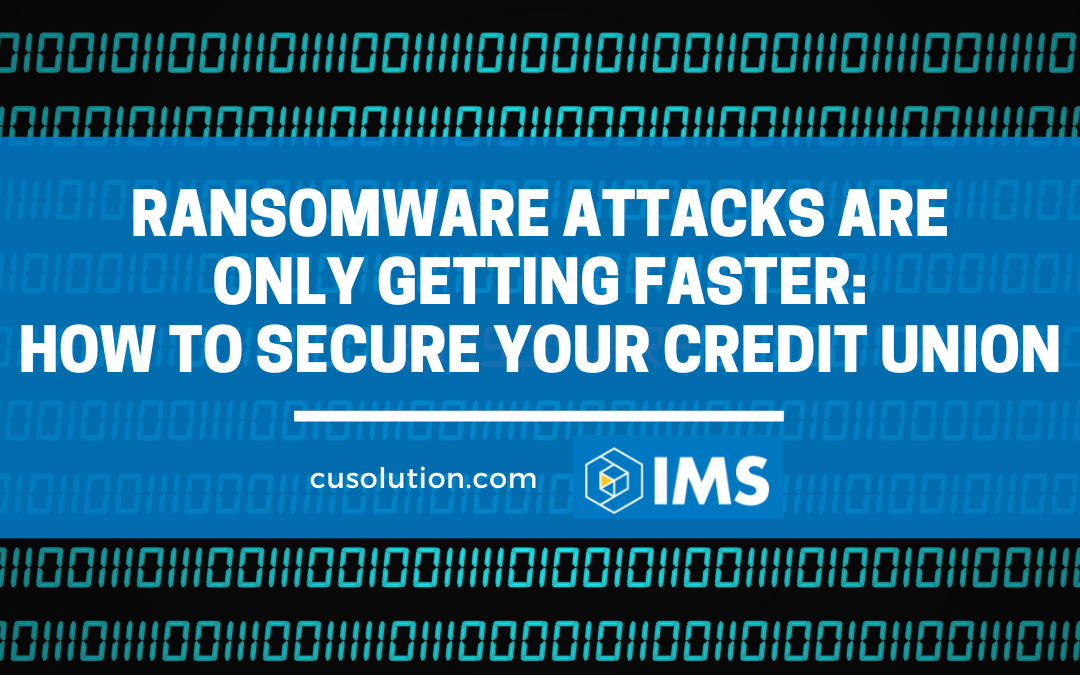In cybersecurity, it’s a constant race with bad actors often seeming to be in the lead. But, with smart strategies and tools, credit unions can still effectively safeguard themselves.
Ransomware attacks are gaining momentum and complexity. These harmful software programs lock down access to computer systems or encrypt files, with attackers asking for a ransom to restore access. For credit unions that handle sensitive data, this threat is particularly concerning due to the potential monetary and reputational harm an attack can cause.
Ransomware Attacks: An Escalating Threat
Ransomware attacks have witnessed a steep rise in recent years. A shocking 75% of organizations reported being targeted by ransomware within the last year, with 38% experiencing multiple attacks, based on a survey from Barracuda Networks, Inc. The study further shared that email was the primary source for 69% of these ransomware attacks.
As ransomware continues to evolve and proliferate, new strains appear. One such example is the recently discovered Rorschach strain, one of the fastest on the market today.
In a trial conducted by Check Point on a 6-core machine with 22,000 files, all files were partially encrypted within 4.5 minutes by Rorschach. This rapid encryption speed dramatically reduces the available reaction time for a user or IT organization to a security breach, increasing the chances of a successful attack. Once successful, Rorschach can extend the ransomware to every machine in the domain, even if the initial attack targets just one machine.
Is Your Credit Union Equipped for This?
Despite the mounting prevalence of ransomware, more than 25% of companies do not feel adequately prepared to handle an attack. This feeling of unpreparedness tends to amplify as an organization grows larger, primarily due to the increased need for data protection and a larger surface to defend.
For credit unions, the aftermath of a ransomware attack can be catastrophic. Apart from the immediate financial setback from paying the ransom, there can be considerable costs associated with recovery, investigation, and system hardening post-attack. Plus, there’s the potential damage to reputation. Members trust credit unions with their sensitive financial data, and a breach could severely erode that trust.
6 Ways To Secure Your Credit Union Against Ransomware Attacks
So, how can credit unions protect themselves against this escalating cyber threat? Here are some practical strategies:
- Access Controls: By implementing strategies such as RBAC (Role-Based Access Control) or ABAC (Attribute-Based Access Control), you can ensure that each user only has the required level of access, preventing unauthorized data access.
- Password Policies: Adopt proper password policies that align with industry standards like NIST 800-63B and check for previously compromised account passwords.
- Multi-Factor Authentication (MFA): Incorporate two-factor authentication (2FA) or MFA to help reduce the risk of account compromises. MFA becomes particularly crucial for privileged accounts, as it bolsters account security even if a password gets stolen.
- Zero-Trust Architecture: Transition to a zero-trust architecture where every connection and action must be authorized and authenticated, eliminating the default trust granted to everything within a network.
- Penetration Testing: Carry out penetration testing to proactively identify and address potential security gaps.
- Data Backup: Maintain comprehensive data backups that cover your entire infrastructure, ensuring you can quickly recover your infrastructure and restore services and functionality even in the event of a ransomware attack.
Amplify Your Ransomware Defense with IMS’s Anomaly Detection
For credit unions aiming to boost their readiness and prevention against ransomware attacks, IMS offers Anomaly Detection powered by Polaris Radar technology. This advanced tool enables you to bounce back faster while enhancing your system’s intelligence. With Polaris Radar, you can track how your data evolves and moves, utilizing machine learning to identify and alert you of any unusual behavior. Enhance your cybersecurity strategy with the power of intelligent anomaly detection.

